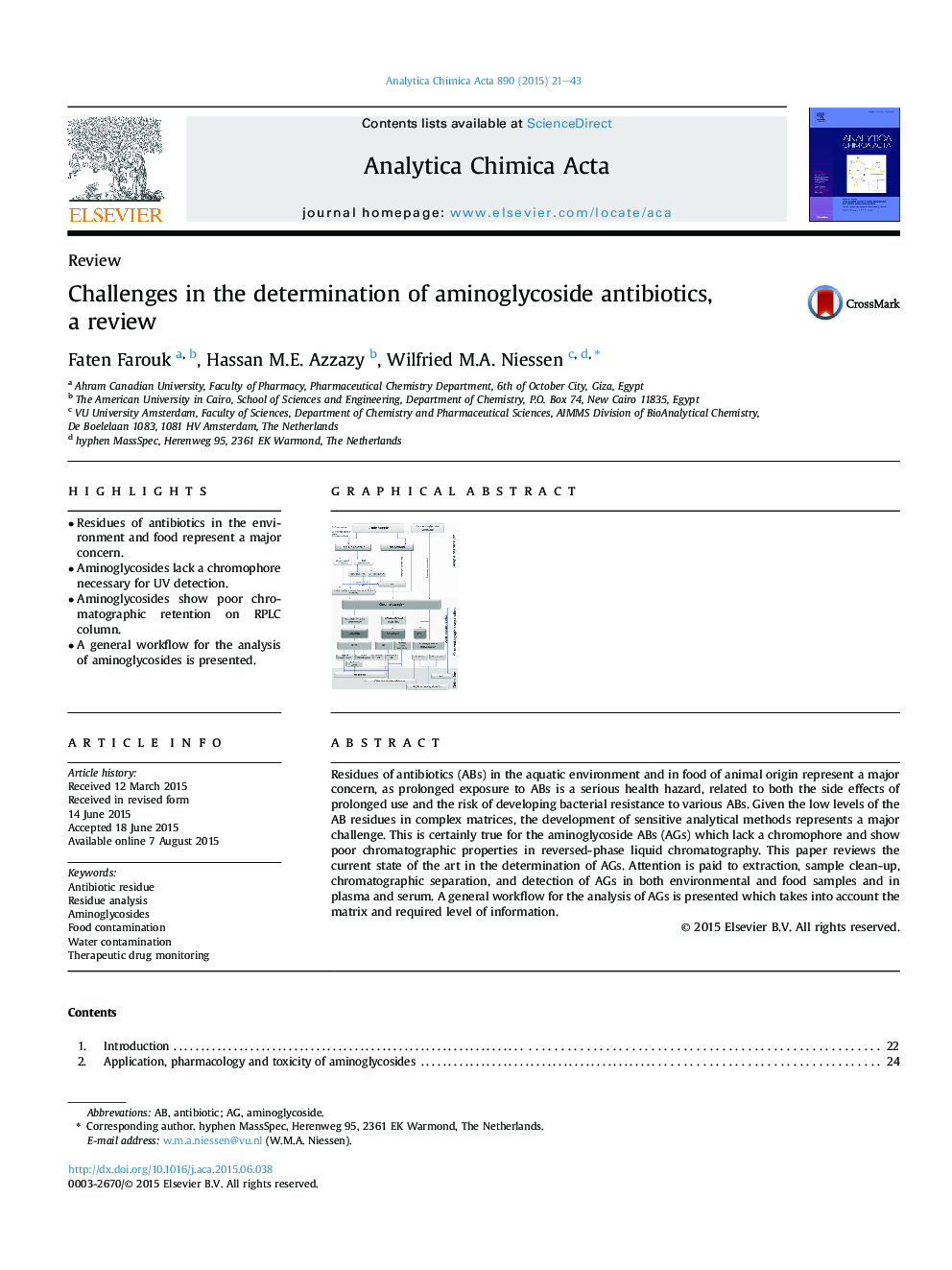| Article ID | Journal | Published Year | Pages | File Type |
|---|---|---|---|---|
| 1163481 | Analytica Chimica Acta | 2015 | 23 Pages |
•Residues of antibiotics in the environment and food represent a major concern.•Aminoglycosides lack a chromophore necessary for UV detection.•Aminoglycosides show poor chromatographic retention on RPLC column.•A general workflow for the analysis of aminoglycosides is presented.
Residues of antibiotics (ABs) in the aquatic environment and in food of animal origin represent a major concern, as prolonged exposure to ABs is a serious health hazard, related to both the side effects of prolonged use and the risk of developing bacterial resistance to various ABs. Given the low levels of the AB residues in complex matrices, the development of sensitive analytical methods represents a major challenge. This is certainly true for the aminoglycoside ABs (AGs) which lack a chromophore and show poor chromatographic properties in reversed-phase liquid chromatography. This paper reviews the current state of the art in the determination of AGs. Attention is paid to extraction, sample clean-up, chromatographic separation, and detection of AGs in both environmental and food samples and in plasma and serum. A general workflow for the analysis of AGs is presented which takes into account the matrix and required level of information.
Graphical abstractFigure optionsDownload full-size imageDownload as PowerPoint slide
